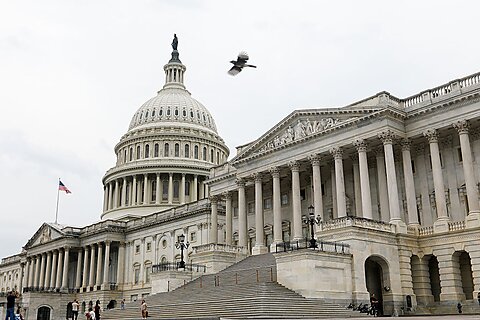Libertarians and many conservatives have long argued that the federal government is too large, too intrusive, and often operates beyond its constitutional limits. They also agree that for liberty to expand, government must contract—dramatically. One way to help do that is to reduce the federal workforce.
The Trump administration pledged to take that step this year, and a recent report shows that an estimated 201,000 executive branch employees had left the federal workforce as of September 23. That’s about 8.7 percent of the current 2.3 million civilian employees—a measurable shift and a good start.
On January 31, while discussing deregulation and staffing cuts, President Trump remarked, “It’s our dream to have everybody, almost, working in the private sector, not in the public sector.” Days later, the White House announced the creation of the Department of Government Efficiency (DOGE), designed to “significantly reduce the size of government.”
The administration’s rationale was blunt: “There are too many federal employees,” declared a White House fact sheet. It noted that, excluding active-duty military and postal workers, the federal workforce exceeded 2.4 million. The number of federal agencies is uncertain—some counts list more than 400—but the point was clear: maintaining this vast bureaucracy contributes directly to soaring federal spending and debt.
The scale is staggering. As Pew Research observes, the civilian workforce makes Washington “the nation’s single largest employer, with even more workers than Walmart, Amazon, or McDonald’s.” The Postal Service alone, with 600,000 employees, would rank among the ten largest private companies—ahead of UPS and FedEx—if it were not government-run.
This growth has been relentless. The early Republic employed barely 4,000 federal workers; by 1901, that number had risen to 231,000. By 2000, it had reached 1.8 million. Over the past 25 years, civilian federal employment has expanded by 27 percent. Meanwhile, federal spending hit $6.75 trillion in FY2024—an unmistakable sign of a government swollen far beyond its constitutional design.
Public opinion reflects this unease. A Gallup poll found that 67 percent of Americans see “big government” as the greatest threat to the country. Similarly, a survey by the Partnership for Public Service (PPS) reported that 63 percent of Americans distrust the federal government. Small wonder, then, that many see reductions in Washington’s ranks as both necessary and overdue.
Still, the PPS is critical of the administration’s approach. “Through firings, forced relocations, and a ‘deferred resignation’ program, the administration has initiated sweeping reductions to the civil service, often in a haphazard and chaotic manner,” the group reported. Their presumably accurate numbers show that as of September 23, some 201,000 civil servants had exited. Large cuts came in the Departments of Defense (55,533), Treasury (30,267), and Agriculture (21,564), along with USAID (9,985). (Note: These numbers are estimates; more specific numbers should be available in November.)
The 8.7 percent reduction in less than a year is substantial. But it comes with a caveat: the Trump administration is also hiring thousands of new employees, especially at the Department of Homeland Security. Whether the net effect results in a leaner government remains to be seen.
Economists at the Cato Institute argue the fiscal implications could be significant. Alex Nowrasteh and Ryan Bourne calculate that cutting federal employment by 10 percent would save $40 billion annually; reducing overall compensation by another 10 percent would save an additional $40 billion. They note federal employees receive 17 percent more in total compensation than comparable private-sector workers—driven largely by benefits, which exceed private-sector levels by 47 percent.
For now, the cuts appear to be moving in the right direction. Trump’s proposed FY2026 budget calls for eliminating another 107,000 non-defense positions, reports Government Executive. And if a government shutdown occurs—as the Office of Management and Budget has warned—further sweeping layoffs may follow, particularly for employees in programs “not legally required to continue,” according to Politico.
Ludwig von Mises, in Socialism, captured the dynamic at work. Expansive, interventionist government, he wrote, “provides thousands and thousands of people with safe, placid, and not too strenuous jobs at the expense of the rest of society.” By contrast, private enterprise forces efficiency and innovation because people must work “with the greatest economy” in their own interest.
President Trump, though not a libertarian (or a predictable, rational policymaker), echoes that sentiment when he says he wants almost everyone working in the private sector rather than the government. For those committed to individual liberty and limited government, that is a worthy vision. Let the cutting continue.














